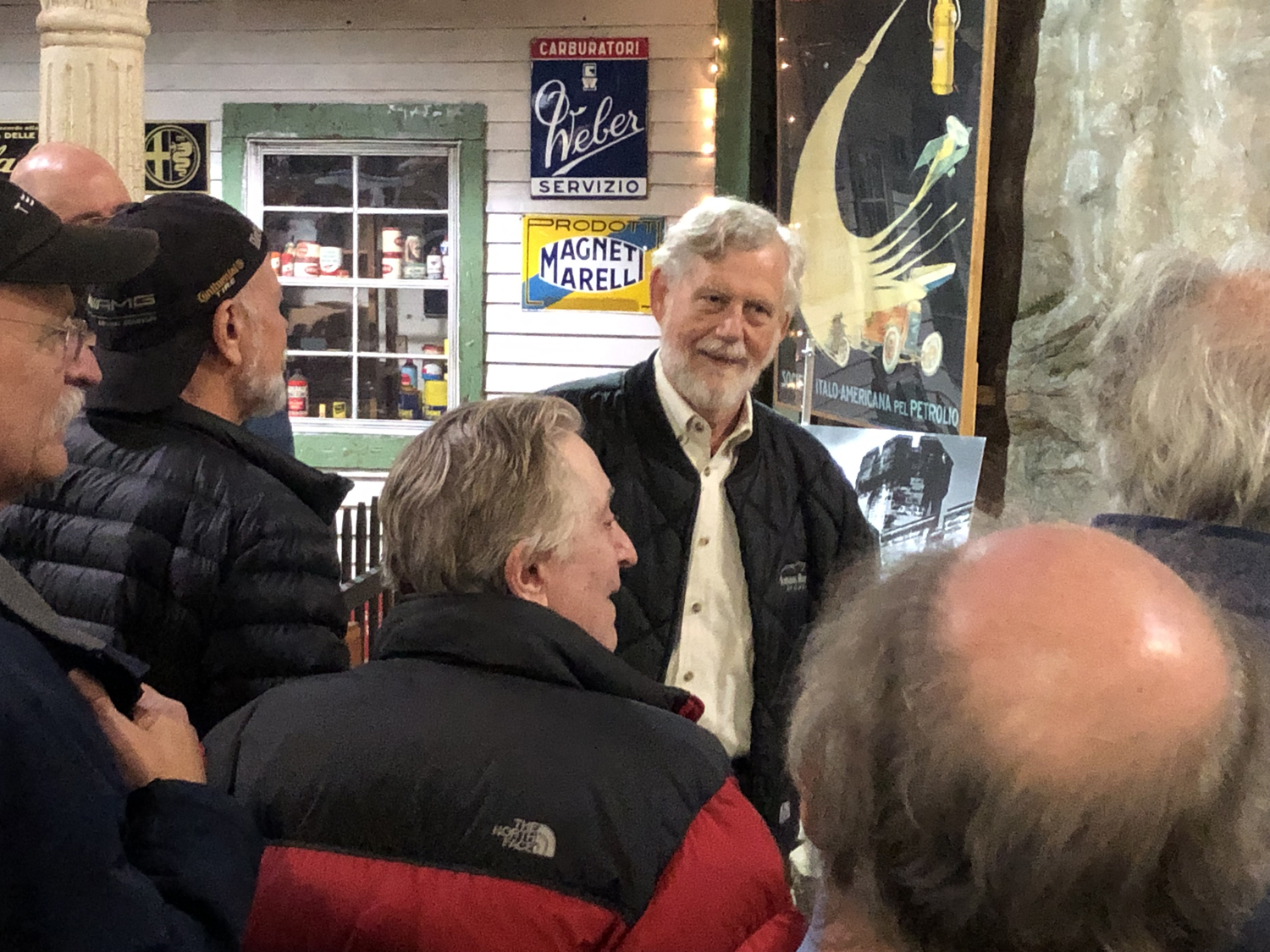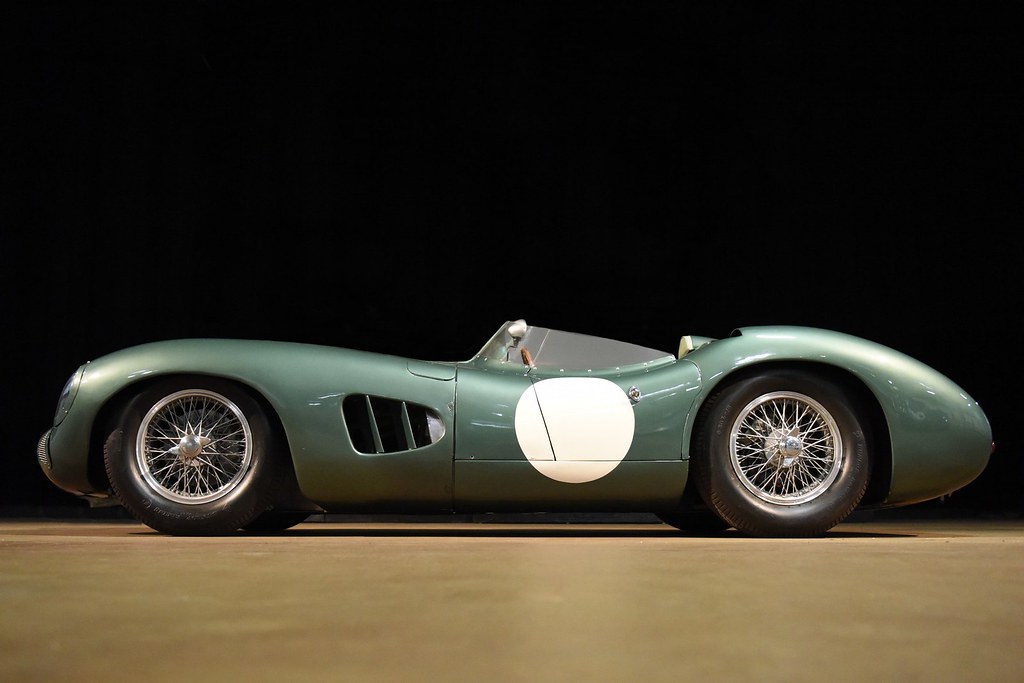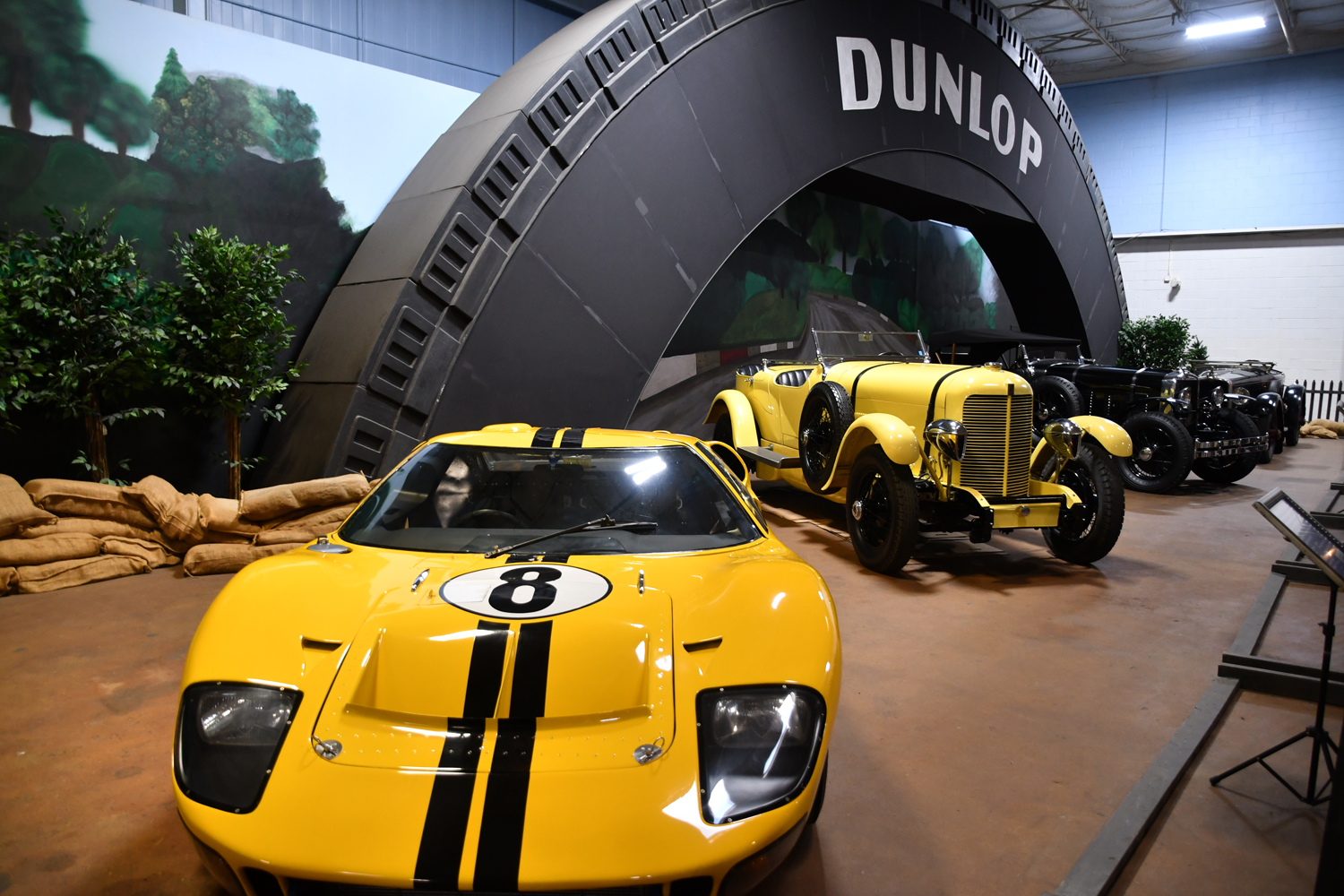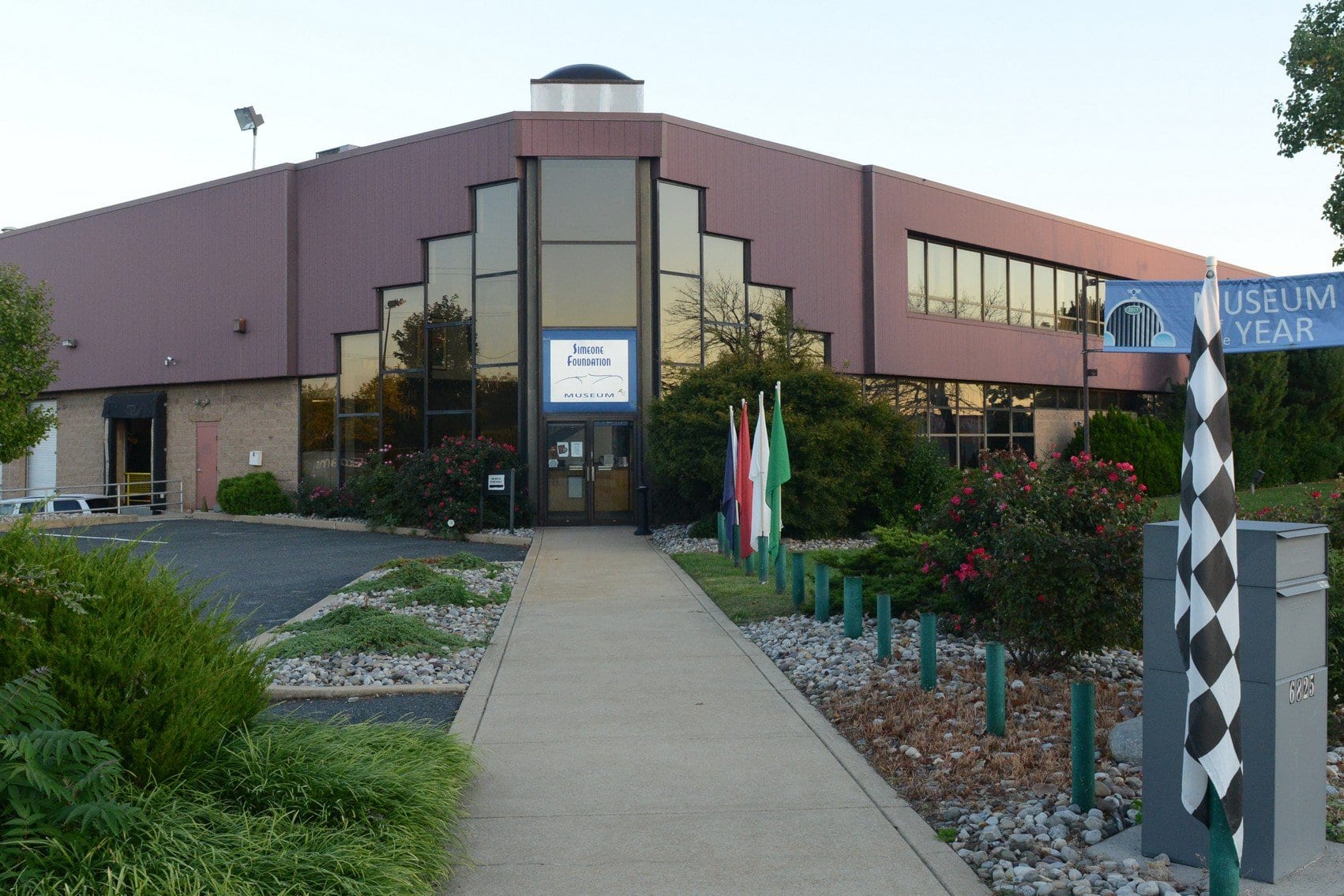It was a few years back. I had no idea what to expect. But I had to try to get in. The Simeone Museum’s archive possessed a motherlode of historically significant automotive art and literature dating back to the birth of the automobile. Having committed to presenting at the Historic Vehicle Association International Drive Conference, gaining access to the Simeone Archive meant everything. I never anticipated it would mean benefitting from the personal attention, warmth and insights of museum founder Dr. Fred Simeone himself.
In our contemporary age of celebrity worship, vapid personalities who, without merit, condescendingly distance themselves behind digital walls act as if, with apologies to F. Scott Fitzgerald, they are not like the rest of us. In such times, encountering ready accessibility to a man of profound accomplishment challenges accepted convention.
Yet, Dr. Simeone, a gifted and accomplished neurosurgeon of global renown, joyfully embraced engaging the public in a passionate effort to promote and preserve automotive racing history. With Dr. Simeone’s passing in June of 2022, his museum now lives on by embodying his same genius and desire for engaging the public to make a century of meaningful racing history available to all.
The following affords a look at the man behind the amazing living history Dr. Simeone spent his life building for the benefit of future generations and why visiting the Simeone Museum merits a high position on any car guy’s life list.
Now, join Drivin’ News in exploring the soul of the Simeone Museum guided by longtime friend of Dr. Simeone and Simeone Museum Director of Programs Mr. Harry Hurst.
Dr. Fred Simeone’s love, vision and priceless racing legacy Part 1

Dr. Fred Simeone behind the wheel of a 1933 Alfa Romeo on a Demonstration Day
Harry Hurst’s love of cars and racing dates back to his teenage years spent as track photographer at Sebring in the 1960s. Decades later as an accomplished photographer, author, technical writer and racing mechanic, the inevitability of Hurst meeting Dr. Fred Simeone seemed a given. Indeed, 1995 witnessed their paths cross at a vintage car event in Philadelphia where Hurst and a friend stared at what appeared to be a breathtaking Aston Martin DBR1. Both questioned how it could possibly be an original here in Philadelphia.

Harry Hurst
Within earshot of their conversation, famous photographer and friend of Simeone, Michael Furman confirmed its authenticity as the Nurburgring race winning 1958 DBR1 and that it belonged to Simeone. The twains were about to meet. Like Furman, Hurst would become a dedicated supporter of Simeone’s vision for an automotive racing museum founded on the Spirit of Competition. Today, Hurst who conceived of the museum’s unique “Demo Days” focuses his 35-years of technical and marketing expertise in support of Simeone’s vision of creating the world’s premier automobile racing museum.
Starting as a dimly lit parking garage in Philadelphia the Simeone Museum came into its own with a freshly constructed and dedicated space in 2008. Since then it has been ranked annually as either the number 1 or number 2 automotive collection in the world with Miles Collier’s Revs Institute occupying the other slot.
Simeone grew up in the decidedly blue-collar neighborhood of Kensington in Philadelphia, where his father, a family doctor, served the surrounding neighborhood. Though not wealthy, his father had a great love for cars, a love he passed on to his son. To this day some of his father’s cars remain in the Simeone collection. Fired by his acquired love for cars, Simeone at an early age began collecting sales literature. As a teenager he would go to Hershey to build onto a budding collection that in the coming century would blossom into one of the finest and most comprehensive automotive literature and art collections in the world.

1958 Aston Martin DBR1
In those early years Simeone’s passion for collecting literature would bring him to the Philadelphia Free Public Library with its extensive collection of automotive literature. His continued presence moved the library staff to present Fred with a card that said, “This is to introduce Frederick A. Simeone. He is our representative, please extend any courtesy to him to support his acquisition of automotive literature.” His passion drove him to do everything he could to ensure that the history of the automobile in general and extraordinary automobiles in particular would be properly told.
Simeone diligently pursued his automotive preservation goals while at the same time attending Temple Medical School, then residences at Harvard University and The Mayo Clinic before returning to Philadelphia to serve for 25 years as Chair of the Department of Neurology at the University of Pennsylvania’s Pennsylvania Hospital. As one of the world’s foremost neurosurgeons he was also considered the busiest. During his tenure his peers voted him the busiest physician in the United States. Hurst with enormous admiration says, “He would perform up to eight or ten surgical procedures every day that he was on. And realize that we are talking spinal and brain surgery.” At the same time Simeone co-authored “The Spine” the seminal text on spinal surgery that continues to be used to train new surgeons today. Hurst says, “It’s incredible to consider what he achieved in promoting the preservation of automotive history in light of his accomplishments as a neurosurgeon.” Remarkable indeed and achieved through a clearly held vision.

Fred Simeone as a boy
In describing Simeone’s vision Hurst says, “Fred envisioned not just the collection and preservation of these significant cars. It was to display these cars in a manner that interpreted their meaning. It’s the only automotive museum I’ve ever seen where the cars on display are used to emphasize the importance of the spirit of competition. How competition is used to improve the cars that you and I now drive.” Hurst points to the disc brakes that set Jaguar’s race cars above and apart from the competition in the 1950s.
Simeone believed strongly in the value of competition. Hurst says, “The belief that there can be no progress without competition stood as a real driving force with Fred. He especially felt it important to communicate that fact, especially to young kids. He loved talking with young kids.”
Of equal importance as a defining principle of the collection, preservation ranked way above restoration in the mind and vision of Simeone. Hurst says, “As you view most cars on display here, the thing that immediately strikes you is, oh my God, why don’t they take that apart and repaint it?” Hurst continues, “The concept of preservation? That is one of the most important legacies of Fred’s vision.”
When Simeone started collecting back in the early 1970s, nobody cared about old race cars. Vintage racing did not yet exist, so without anyplace to race obsolete race cars their value quickly approached nil. Hurst says, “Fred’s passion for racing drove him to start collecting these “worthless” old pieces of history.” Back then anybody interested in possessing such old cars would acquire one and immediately dismantle, rebuild and refinish it to sparkling “new.” Simeone, with collecting tastes that extended beyond old cars, also had an interest in other vintage collectibles including antique furniture. With antique furniture, anything that alters the original finish seriously degrades its value. Simeone applied that same aesthetic to his managing his car collection.

Dr. Simeone’s 300SL
The worth of an authentic vehicle as a valuable historic document is evidenced by the 1955 300SL in the Simeone Collection. Originally purchased by Simeone’s father Dr. Anthony Simeone in the 1950s (for somewhere around $7,000 to $8,000). It was his father’s pride and joy. Today that 300SL stands fundamentally just as it rolled out of the showroom. With both paint and interior original. Hurst says, “It is one hundred percent original to the extent that I just arranged for a gentleman to fly up to see the car to confirm the originality of his 1955 300SL. That man spent all day referencing the Simeone 300SL to determine his 300SL’s authenticity.” In today’s collector car world, the Simeone 300SL serves as the standard for determining the accuracy of paint finish, original upholstery stitching and so on. Hurst says, “So much can be lost if you replace something. If someone says I’m just replacing the carpeting…, NO! The carpeting may be a certain type. The backing, the stitching, the edging, all of that is only original once and sometimes it’s very hard to replicate. Hurst goes on to say, “Fred would always say, something can only be original once.”
That belief now serves as the guiding principle for the presentation of his collection. With that said, Hurst says, “We do make sure that mechanically all cars are in excellent condition. Only, where absolutely necessary would we do any repainting or replacement.” Hurst went on to say, “That’s also why we don’t vintage race any of the cars, though all of the cars in the collection do run. We take them out twice a month for demonstrations on the 3-acre back lot beside the museum where we drive them around so visitors can see, hear, smell what these cars were like. However, mindful of their frailty, we do not push them to racing speeds. We run them. We do not abuse them.”

Simeone chose to direct his focus on acquiring racing cars that typically possessed headlights and fenders. Such cars could conceivably be driven on the road and, thus, entered in LeMans, Sebring and Daytona endurance races up to a certain point in time. Later years found this not necessarily the case. And indeed the period of cars represented in the museum skews to the early and mid-20th century. Hurst says, “That is our real concentration. Fred did not favor Formula 1 cars as he felt they had no relationship to production vehicles. Fred clearly felt that for a car to be worthy for inclusion in his collection he preferred production-based vehicles. That’s where Fred’s interest rested. He focused on how competition improved the breed and how that improved the cars that the public would drive.”
An important lesson learned by Simeone in creating his legacy came by way of his association with another famous car collector, Bill Harrah, legendary owner of Harrah’s Casino in Las Vegas. The lesson arrived by way of Harrah’s death in 1978 and the realization that Harrah had made no plans in his will for his collection. As a result, Holiday Inn took over the Harrah assets and started selling off a lot of the cars. Fred actually bought a Stutz, a Squire and the Ford GT40 Mark IV, from Holiday Inn.

With Harrah’s lesson learned, plans were well in place when time arrived for Simeone’s Museum dreams to come to fruition. By 2008 and the museum’s opening Simeone had donated his entire collection to the Simeone Automotive Foundation. He had taken the lessons of Harrah’s passing to heart and recognized the problems museums experience when the founder dies. Simeone had thoughtfully acted to ensure a stabile future where in his absence his legacy would be supported by a strong financial foundation and a dedicated and knowledgeable staff.
The story of what is widely considered the world’s preeminent automobile racing museum began with the passing, in 1972, of Dr. Anthony Simeone a family doctor in the blue-collar Kensington neighborhood of Philadelphia. Seeding his brilliant son Frederick’s future with a bequest of $8,000, four old cars and an inherited passion for automobiles, the father set the stage for his son’s brilliant medical career and a realized passion to preserve the priceless history of automobile racing in the 20th century.

Burton, Reading this makes me pine for not being able to attend the second bus trip to the Simone museum. My attendance at the first bus trip left more than a permanent image in my mind of the variety, rarity, and like like feeling by the choice to display the vehicles in real life diorama settings. Dr.Simone lived life full gas and we benefit by it today.
Thank you Burton
You were missed. Guide Harry Hurst made it truly special.
I have had this musuem on my “to do list” for some time. I need to get off my butt and make the trip. Thanks for the reminder.
Good to hear from you Chuck. Happy New Year. You will be most pleased when you check this box.